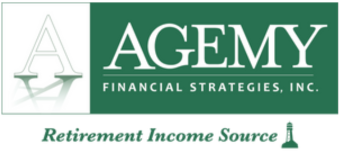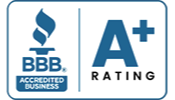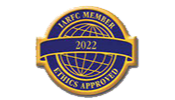Creating a Healthy Financial Portfolio With Agemy Financial Strategies
Setting up a good nest egg may seem intimidating, but there are steps you can take to make the process painless.
Retirement is a time when you can finally sit back and enjoy the fruits of your labor. As exciting as retirement is, it may also feel a daunting task to make sure you and your savings are ready.
To truly make the most of your retirement, it’s crucial that you have a solid financial plan in place. This means creating a healthy and stable financial portfolio. In this blog, we’ll explore the key elements of a healthy financial portfolio and provide tips for retirees looking to take control of their financial future.
What is a Financial Portfolio?
A financial portfolio is a collection of assets and can include investments like stocks, bonds, mutual funds and exchange-traded funds. Because each investor is unique in terms of goals, risk tolerance and age, there’s no standardized template for ensuring a successful portfolio. Instead it takes work and careful planning.
Here are four tips for creating a portfolio that will go the distance.
Identify Your Investment Profile
The first step to a healthy financial portfolio is to identify your long-term and short-term goals. Prioritize your goals from most important to least important. Write down specific details about each goal like the timeline and the amount of money you’ll need / how much you have already saved.
Once you have identified each goal with a respected timeline, you’ll need to establish investment objectives for pursuing those goals. A great example of this is what kind of portfolio do you want to create? Do you want a portfolio that is conservative, moderate or aggressive? To achieve this you will need to understand risk tolerance and how it affects the value of your portfolio.
Understanding Risk Tolerance
Your risk tolerance is your ability and willingness to accept uncertainty, volatility, and the potential for losses in your investment portfolio.
A higher risk tolerance may lead to a portfolio that is heavily weighted towards equities, while a lower risk tolerance may result in a more balanced portfolio with a higher allocation towards fixed income securities. Your risk tolerance can be influenced by many factors, including age, income, investment goals, and personal circumstances.
It’s especially important for retirees to regularly assess and reassess risk tolerance as it can change over time due to life events, market conditions, and other factors. If your risk tolerance decreases, it may be necessary to reallocate your portfolio to align with your current level of comfort.
Striking A Balance Between Income and Growth
Balancing income and growth in your retirement portfolio is a crucial step in ensuring your financial stability and reaching your long-term goals. The goal is to find the right mix of investments. This way, it can help provide a steady stream of income and growth in the future. Here are some ways you can balance income and growth:
- Asset Allocation:The way you allocate your assets will affect your income and growth potential. Generally, stocks provide more growth potential than bonds, while bonds provide more income potential. Consider your goals, risk tolerance, and time horizon when determining your asset allocation.
- Diversification: Diversifying your investments is crucial for balancing income and growth. Consider a mix of stocks, bonds, and cash to reduce your overall portfolio risk. This way, you can benefit from the potential for growth in stocks, the stability of bonds, and the safety of cash.
- Regular Income: Consider investments that provide regular income, such as dividend-paying stocks, bonds, and annuities. Regular income can help cover your living expenses and provide financial stability.
- Long-term Growth: To ensure that your portfolio has enough growth potential to last throughout your retirement, consider investing in a mix of growth-oriented stocks and bonds. This will help you maintain the value of your portfolio over time and protect against inflation.
Protect Your Portfolio From Downturns
In order to protect your retirement savings during market downturns, consider adding two safety nets to your portfolio. A year’s worth of spending cash will act as your first line of defense. At the start of each year, make sure you have enough cash to supplement your regular annual income from things like:
- Annuities
- Pensions
- Social Security
- Rental Income
- Other regular income
Your second line of defense will be having two to four years worth of living expenses saved. According to this analysis, the average peak-peak recovery time for diversified stocks in bear markets is three and a half years. By keeping two to four years’ worth of living expenses in short-term bonds, CDs, or even your dedicated emergency fund, you can help access cash when needed without having to sell stocks during a market decline.
Tax Efficiency
Did you know that asset allocation can also be optimized for tax-efficiency?
Asset location determines the proper account in which to place investments for the most favorable overall tax treatment. The best location for a particular security depends on your financial profile, prevailing tax laws, investment holding periods, and the tax and return characteristics of the underlying securities.
With that being said, tips to help reduce taxes in your portfolio could include:
- Holding dividend-paying U.S. stocks in a taxable account to take advantage of lower taxes on qualified dividends.
- Placing international stocks in a taxable account to claim back a foreign tax credit on the amount withheld from dividends.
- Placing income-paying assets like bonds or real estate investment trusts (REITs) in a tax-advantaged account.
- Selecting stocks/funds with closely correlated yet different counterparts for tax-loss harvesting opportunities.
- Holding assets with high distributions or high turnover (such as commodities funds) in a tax-advantaged account.
Further ways to help minimize taxes on your retirement savings include:
- Contribute to a 401(k).
- Contribute to a Roth 401(k).
- Contribute to an IRA.
- Contribute to a Roth IRA.
- Make catch-up contributions.
- Take advantage of the saver’s credit.
- Avoid the early withdrawal penalty.
- Remember required minimum distributions.
- Delay 401(k) withdrawals if you are still working.
- Time your retirement account withdrawals.
Final Thoughts
As you approach retirement, it’s important to have a solid financial plan in place to ensure a secure and comfortable future. Saving money to fund a comfortable retirement is perhaps the main reason people invest. Finding the right balance between investment risk and return is vital to a successful retirement savings strategy.
If you would like assistance in creating a healthy financial portfolio, the Fiduciary advisors here at Agemy Financial Strategies can work with you to create a stable income in retirement.
Ready to get started? Contact us to set up your complimentary consultation today.







Leave a Reply
Want to join the discussion?Feel free to contribute!